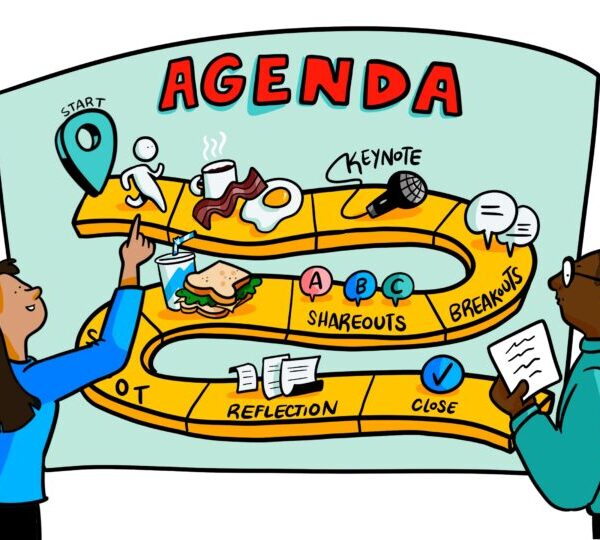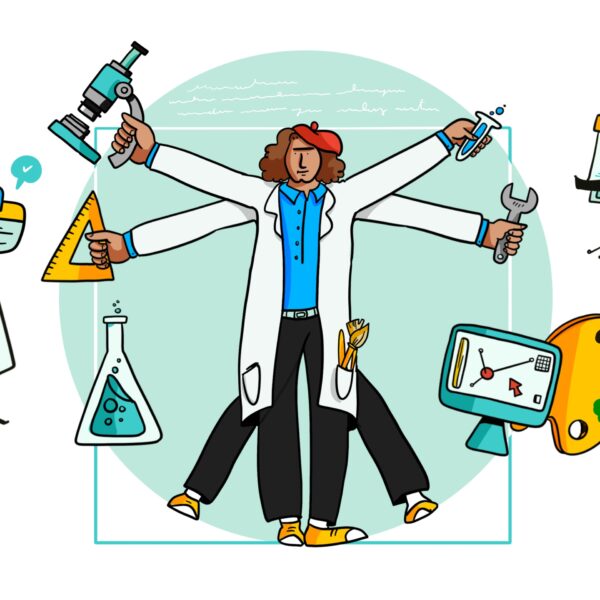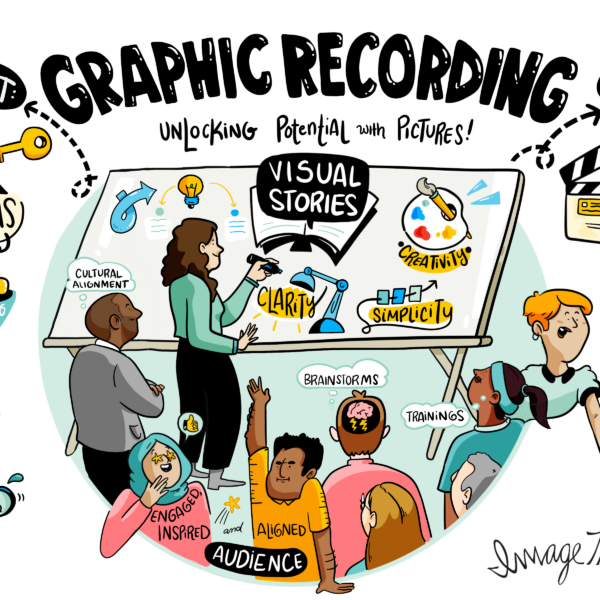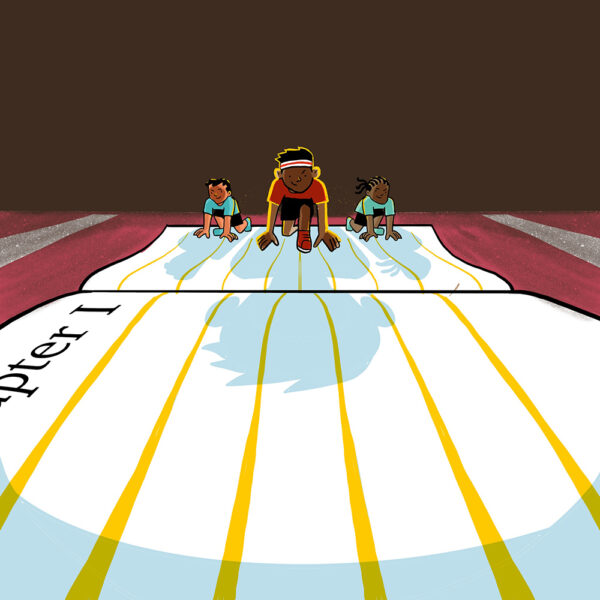Want Clarity? Stop Writing and Start Drawing! (There’s a LOT of Precedent)
Sometimes, it can be difficult for new clients to understand why graphic recording and graphic facilitation is so effective. This article is part of an ongoing series, It’s a Visual World. In it, we explore everyday experiences that showcase the myriad ways our brains work more efficiently with visual input. Look for areas in your daily life for the visual iconography you rely on, then give us a call. Seeing is believing.
Talk Like an Egyptian
Over the years, graphic recording has lived by many names. It’s also a rarified skill that few people and companies have access to. As such, ImageThink dedicates extensive time to educating people on the terminology, process, and value of our core service.
A big part of that value stems from the fact that visual communication leans into the human brain’s natural optimization and preference for visuals. You need look no further than the ways early man communicated. From cave paintings to the earliest forms of documented writing, communication starts as pictures. Need an immediate touchstone? Look to the tombs of ancient Egypt.
The Egyptian hieroglyphs you’re likely familiar with from an elementary school field trip to the museum of natural history or National Geographic magazine, are a prime example of how combining words and pictures can help tell a story clearly through narrative visualization. As one of the first forms of visual communication, Egyptian hieroglyphs were the formal written language of the ancient Egyptian people and combined logographs with syllabic and alphabetic elements. This proto-writing system contained more than 1,000 distinct symbols, yet event today even an untrained eye can parse key ideas contained in thousand-year-old papyrus scrolls.
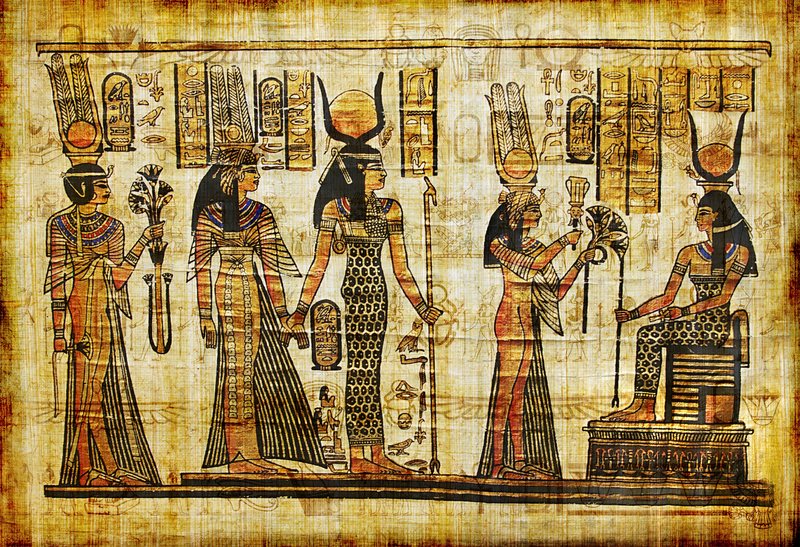
Please state for the record….
Stenography is Greek in origin (stenos meaning narrow, and graphein meaning to write) and dates to between 300 and 400 B.C. Sometimes used interchangeably with shorthand, stenography is the process of writing quickly by using a unique alphabet of symbols and characters that abbreviate the process of writing out complete words and sentences.
These days, you’re probably most-familiar with stenography in a courtroom setting. Though, until relatively recently, it was commonly used by journalists as a way to efficiently transcribe interviews that could not be captured through audio recording. The courtroom stenographer is the person at the front of the room, typing on a modified keyboard that captures shorthand notation, and instantaneously translates it into fully written, longhand transcription.
Fun fact: from the invention of the first machine for writing shorthand in the 1970’s, the resulting tape still had to be manually translated to longhand transcripts. With the explosion of computer processing power, this process was automated, which also led to modern television closed captioning.
Editor’s Note on Visual Communication
The concept of proofreading has origins more recent than you might expect. Prior to Johannes Gutenberg’s 1400s invention of the printing press with moveable type, tomes were copied by hand. This resulted in very frequent, very human errors. Only sometimes were these noticed and corrected after publication.
With the arrival of the printing press, type was arranged in advance of printing, and a test print, or galley proof was created ahead of mass duplication. Printers who no longer wished to be solely responsible for any errors hired proofreaders to check the galleys and note any mistakes.
Any journalists out there will be familiar with what proofreaders’ marks look like. The red carrot, the dreaded strikethrough with a loop, or the redemptive “stet.” These marks, symbols, and abbreviations, delivering the confident, calculated, oblivion of a thin red ballpoint missile, all exemplify the utility, clarity, and ease of visual communication.
Odds are, even if you’re not using formal proofreader’s notation, you’re unwittingly working the same way. If you’ve ever circled, highlighted, or otherwise called attention to items on your analog to-do list, you’ve worked visually. It’s instinctive, instant, and universally clear.
Underlining the Point
We don’t often focus on writing on the blog. So why the love for the letter in this edition? Because whether we’re looking at ancient origins of the written word, or more modern ways to make it move more quickly, humans naturally gravitate toward a visual mode of writing. Symbols, logographs, and icons all conspire to communicate ideas quickly and more accurately than writing alone. Heck, if you’re like most of us, you didn’t make it all the way to the end of this article…too many words. Strike that. Not enough pictures.
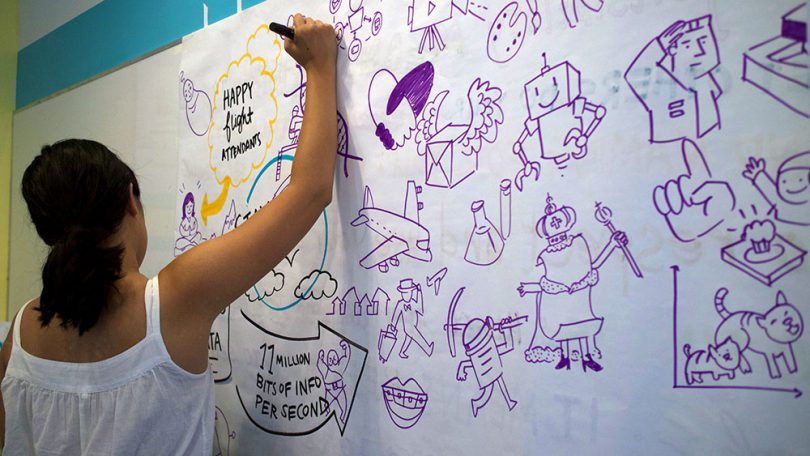
Ready to start communicating directly with peoples’ brains? Don’t rely on text alone. Give ImageThink a call. We can help.
